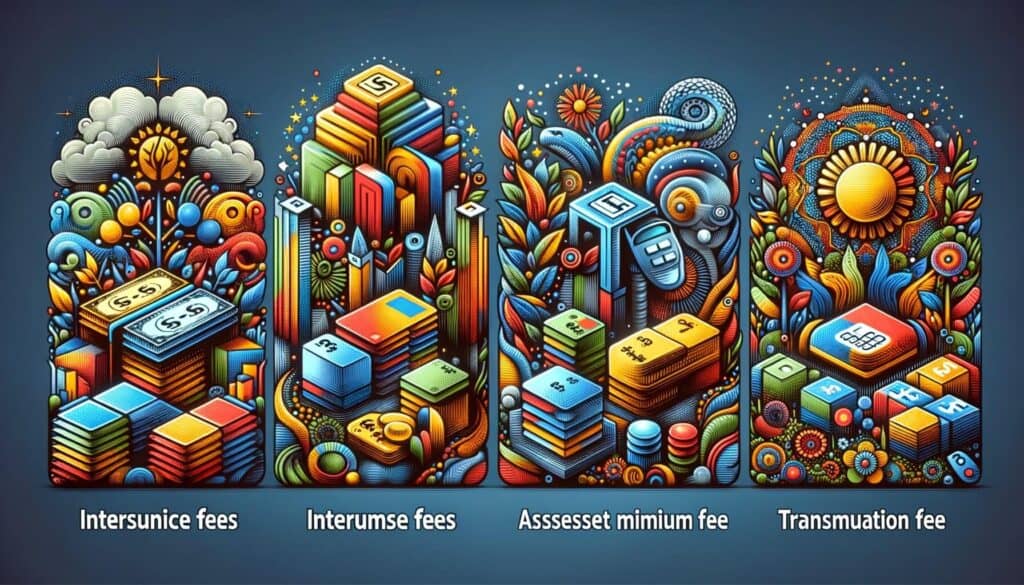
By Cindy Gardea February 14, 2025
Credit card processing is a crucial aspect of modern-day commerce. It allows businesses to accept payments from customers using credit or debit cards, providing convenience and flexibility for both parties involved.
In this comprehensive guide, we will delve into the intricacies of credit card processing, exploring its basics, the role of payment gateways, step-by-step processes, different types of fees, security measures, factors to consider when choosing a credit card processor, common challenges, and frequently asked questions.
Understanding the Basics of Credit Card Processing

Credit card processing involves a series of steps that enable the transfer of funds from a customer’s credit or debit card to a merchant’s account. The process begins when a customer makes a purchase using their card. The merchant then sends the transaction details to their payment processor, who acts as an intermediary between the merchant and the customer’s bank. The payment processor verifies the transaction and requests authorization from the bank to proceed with the payment.
Once the authorization is received, the payment processor sends the approval back to the merchant, who can then complete the transaction. The funds are transferred from the customer’s bank to the merchant’s account, usually within a few business days. This entire process occurs seamlessly and quickly, allowing businesses to accept payments efficiently.
The Role of Payment Gateways in Credit Card Processing

Payment gateways play a crucial role in credit card processing. They act as a bridge between the merchant’s website or point-of-sale system and the payment processor. When a customer makes a purchase online or at a physical store, the payment gateway securely collects the customer’s payment information and encrypts it to protect against fraud.
The payment gateway then sends the encrypted data to the payment processor for verification and authorization. Once the transaction is approved, the payment gateway relays the confirmation back to the merchant, allowing them to complete the sale. Payment gateways also provide additional features such as recurring billing, fraud detection, and reporting tools, making them an essential component of credit card processing.
Step-by-Step Guide: How Credit Card Processing Works
To better understand the intricacies of credit card processing, let’s explore a step-by-step guide on how it works:
1. Customer initiates a purchase: The process begins when a customer decides to make a purchase using their credit or debit card. They provide their card details, including the card number, expiration date, and CVV code.
2. Merchant sends transaction details: The merchant collects the customer’s payment information and sends it to their payment processor or payment gateway. This information includes the transaction amount, card details, and any additional data required for verification.
3. Payment processor verifies the transaction: The payment processor receives the transaction details and performs various security checks to ensure the transaction is legitimate. They check for fraud indicators, verify the card details, and assess the available funds in the customer’s account.
4. Authorization request: Once the payment processor has verified the transaction, they send an authorization request to the customer’s bank. This request seeks approval to proceed with the payment and transfer the funds from the customer’s account to the merchant’s account.
5. Bank approves the transaction: The customer’s bank receives the authorization request and checks if the customer has sufficient funds to cover the transaction. If the funds are available, the bank approves the transaction and sends an authorization code back to the payment processor.
6. Confirmation to the merchant: The payment processor receives the authorization code from the bank and relays it back to the merchant. This confirmation allows the merchant to complete the sale and provide the customer with a receipt or confirmation of the transaction.
7. Settlement and funding: After the transaction is completed, the payment processor initiates the settlement process. They transfer the funds from the customer’s bank to the merchant’s account, usually within a few business days. The exact timing may vary depending on the payment processor and the merchant’s bank.
Different Types of Credit Card Processing Fees

Credit card processing fees are an essential consideration for businesses. These fees vary depending on the type of transaction, the payment processor, and the specific terms of the merchant’s agreement. Here are some common types of credit card processing fees:
1. Interchange fees: Interchange fees are charged by the card networks (Visa, Mastercard, etc.) and are a percentage of the transaction amount. These fees are paid by the merchant’s bank to the customer’s bank and cover the cost of processing the transaction.
2. Assessment fees: Assessment fees are also charged by the card networks and are a fixed percentage of the transaction amount. These fees go towards supporting the card network’s infrastructure and services.
3. Markup fees: Markup fees are charged by the payment processor or merchant service provider. They are additional fees added on top of the interchange and assessment fees and cover the cost of the payment processing services provided by the processor.
4. Monthly fees: Some payment processors charge monthly fees for their services. These fees may include a monthly statement fee, a gateway fee, or a monthly minimum fee.
5. Chargeback fees: Chargeback fees are incurred when a customer disputes a transaction and requests a refund. The payment processor may charge a fee to cover the administrative costs associated with handling the chargeback.
It is important for businesses to carefully review and understand the fee structure of their chosen payment processor to ensure they are getting the best value for their money.
Security Measures in Credit Card Processing
Security is a paramount concern in credit card processing. With the increasing prevalence of data breaches and identity theft, it is crucial for businesses to implement robust security measures to protect their customers’ payment information. Here are some common security measures in credit card processing:
1. PCI DSS compliance: The Payment Card Industry Data Security Standard (PCI DSS) is a set of security standards established by the major card networks to ensure the secure handling of cardholder data. Businesses that process credit card payments must comply with these standards to protect sensitive customer information.
2. Encryption: Encryption is the process of converting sensitive data into unreadable code to prevent unauthorized access. Payment gateways and processors use encryption to protect cardholder data during transmission and storage.
3. Tokenization: Tokenization is a technique that replaces sensitive cardholder data with a unique identifier called a token. This token is used for transaction processing, while the actual card data is securely stored by the payment processor. Tokenization reduces the risk of data breaches as the sensitive information is not stored by the merchant.
4. Fraud detection and prevention: Payment processors employ sophisticated fraud detection tools to identify and prevent fraudulent transactions. These tools analyze various data points, such as transaction patterns, IP addresses, and customer behavior, to detect suspicious activity and flag potential fraud.
5. EMV chip technology: EMV (Europay, Mastercard, and Visa) chip technology is a more secure method of processing credit card payments. It uses a microchip embedded in the card to generate a unique transaction code for each purchase, making it difficult for fraudsters to clone or counterfeit cards.
By implementing these security measures, businesses can protect their customers’ payment information and build trust in their brand.
Factors to Consider When Choosing a Credit Card Processor
Choosing the right credit card processor is crucial for businesses. It can impact the efficiency of payment processing, the cost of fees, and the overall customer experience. Here are some factors to consider when selecting a credit card processor:
1. Pricing structure: Understand the pricing structure of the credit card processor. Compare the interchange fees, assessment fees, and markup fees to ensure they are competitive and transparent.
2. Integration options: Consider the integration options available with the credit card processor. Ensure that it can seamlessly integrate with your existing point-of-sale system or e-commerce platform.
3. Payment methods: Check if the credit card processor supports a wide range of payment methods, including credit cards, debit cards, mobile wallets, and alternative payment options. This ensures that you can cater to a diverse customer base.
4. Security measures: Evaluate the security measures implemented by the credit card processor. Ensure they are PCI DSS compliant and offer encryption, tokenization, and fraud detection tools.
5. Customer support: Consider the level of customer support provided by the credit card processor. Look for 24/7 support, responsive communication channels, and a dedicated account manager.
6. Reporting and analytics: Assess the reporting and analytics capabilities of the credit card processor. Look for features such as transaction reporting, sales analytics, and customer insights to help you make data-driven decisions.
By carefully considering these factors, businesses can choose a credit card processor that aligns with their needs and provides a seamless payment experience for their customers.
Common Challenges in Credit Card Processing and How to Overcome Them
While credit card processing offers numerous benefits, it also presents some challenges for businesses. Here are some common challenges and strategies to overcome them:
1. Chargebacks: Chargebacks occur when a customer disputes a transaction and requests a refund. To minimize chargebacks, businesses should provide clear product descriptions, excellent customer service, and a fair return policy. They should also keep detailed records of transactions and respond promptly to chargeback requests.
2. Fraudulent transactions: Fraudulent transactions can result in financial losses for businesses. To mitigate this risk, implement robust fraud detection tools, monitor transaction patterns for suspicious activity, and use address verification systems and CVV verification.
3. Payment disputes: Payment disputes can arise when customers are dissatisfied with a product or service. To prevent disputes, provide accurate product descriptions, promptly address customer concerns, and offer refunds or exchanges when necessary.
4. Technical issues: Technical issues such as system downtime or connectivity problems can disrupt payment processing. To minimize the impact of technical issues, choose a reliable payment processor with a strong track record of uptime and responsive technical support.
5. Compliance requirements: Compliance with PCI DSS and other industry regulations can be challenging for businesses. To ensure compliance, regularly update your systems and software, conduct security audits, and train employees on data security best practices.
By proactively addressing these challenges, businesses can streamline their credit card processing operations and provide a positive payment experience for their customers.
Frequently Asked Questions about Credit Card Processing
Q1. What is a payment processor?
A payment processor is a company that facilitates credit card transactions between merchants and customers. They handle the authorization, settlement, and transfer of funds from the customer’s bank to the merchant’s account.
Q2. What is a payment gateway?
A payment gateway is a technology that securely collects and encrypts customer payment information during an online transaction. It acts as a bridge between the merchant’s website or point-of-sale system and the payment processor.
Q3. How long does it take for funds to be transferred to the merchant’s account?
The timing of fund transfers can vary depending on the payment processor and the merchant’s bank. In general, funds are transferred within a few business days after the transaction is completed.
Q4. What is PCI DSS compliance?
PCI DSS compliance refers to the adherence to the Payment Card Industry Data Security Standard. It is a set of security standards established by the major card networks to ensure the secure handling of cardholder data.
Q5. Can businesses accept payments from international customers?
Yes, businesses can accept payments from international customers. However, they may need to consider additional factors such as currency conversion, international transaction fees, and compliance with local regulations.
Conclusion
Credit card processing is a fundamental aspect of modern commerce, enabling businesses to accept payments from customers using credit or debit cards.
By understanding the basics of credit card processing, the role of payment gateways, the step-by-step process, different types of fees, security measures, factors to consider when choosing a credit card processor, common challenges, and frequently asked questions, businesses can navigate the world of credit card processing with confidence.
By selecting the right credit card processor, implementing robust security measures, and addressing common challenges, businesses can provide a seamless payment experience for their customers and drive growth in their operations.
